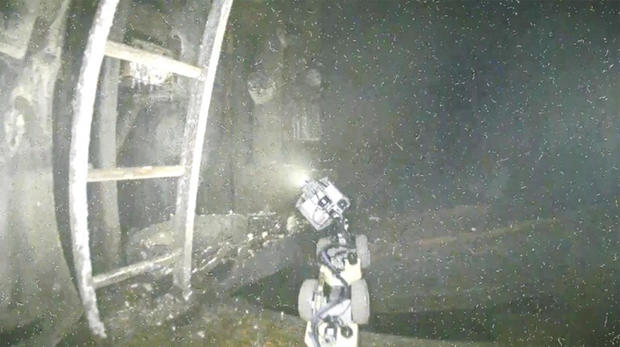
Challenging next phase of Fukushima nuclear plant cleanup begins with robot set to gather nuclear fuel debris
Tokyo – An extendable robot began a two-week mission Tuesday to retrieve the first sample of melted fuel debris from inside one of three damaged reactors at the Fukushima Daiichi nuclear power plant. Highly radioactive fuel and other materials in the reactors melted when a massive earthquake and tsunami in 2011 damaged the plant’s cooling systems.
The plant’s operator, Tokyo Electric Power Company Holdings, has previously used small robots to examine the inside of the reactors, but Tuesday was to be the first attempt by the robot and its operators to collect a sample of the melted debris. The operation marks the beginning of the most challenging part of the plant’s decades-long decommissioning.
The mission was initially scheduled to begin on Aug. 22 but was suspended when workers noticed that the 5-foot pipes they were using to push the robot into the reactor had been arranged in the wrong order, TEPCO said. The equipment was reassembled in the right order for Tuesday’s attempt, the company said.
World marks 10 years since Fukushima disaster
08:44
Once inside the reactor vessel, the robot, nicknamed “telesco,” is operated remotely from a safer location.
images taken by the miniature drones sent deep into a badly damaged reactor at the plant, showing displaced control equipment and misshapen materials, but leaving many questions unanswered about the daunting task of decommissioning the facility. The photos were the first from inside the main structural support called the pedestal in the hardest-hit No. 1 reactor’s primary containment vessel, an area directly under the reactor’s core.
The high-definition color images captured by the drones showed brown objects with various shapes and sizes dangling from various locations in the pedestal. Parts of the control-rod drive mechanism, which controled the nuclear chain reaction inside the reactor, and other equipment attached to the core, were dislodged.
TEPCO via AP
TEPCO officials said they were unable to tell from the images whether the dangling lumps were melted fuel or melted equipment without obtaining other data, such as radiation levels. The drones didn’t carry dosimeters to measure radiation as they had to be lightweight and maneuverable.
The drone cameras could not see the bottom of the reactor core, in part because of the darkness of the containment vessel, officials said.
Officials hope the information from those initial probes and the looming sample mission using the larger robot will help them to develop technologies and other robots to complete the removal of the highly radioactive waste.
More
More
Source: cbsnews.com